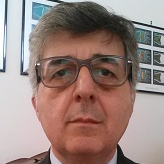Synthetic Jet Actuators
A special issue of Actuators (ISSN 2076-0825).
Deadline for manuscript submissions: closed (31 October 2018) | Viewed by 34974
Special Issue Editors
Interests: thermo-fluid dynamic stability; flow control; synthetic jet actuators; free surface flows
Special Issues, Collections and Topics in MDPI journals
Interests: modal decomposition; reduced-order models; flow control; synthetic jet actuators; gasdynamics; thermo-fluid dynamic stability
Special Issues, Collections and Topics in MDPI journals
Special Issue Information
Dear Colleagues,
It has been many years since Synthetic Jet (SJ) actuators have been used for active flow control, in many different applications. These devices are able to manipulate the flow, to modify its natural behavior over a surface, or in a particular environment, inducing a favorable variation of the aerodynamic forces. Their application field is extremely wide, including flow control, mixing enhancement, heat transfer and many others. Nowadays, different types of actuators have been developed, tested and applied in several engineering problems. These include, among others, the classical SJ devices, whose diaphragm movement is driven by piezo-electric elements, loudspeakers and latest plasma actuators (or sparkjets). This Special Issue is aimed at presenting a complete overview on “Synthetic Jet Actuators”, including their characterization, modelling and various applications.
Contributions are particularly encouraged related (but not limited) to:
- numerical and experimental characterization of SJ actuators;
- physical modeling of SJ devices;
- application of SJ actuators to engineering problems: flow control, drag reduction, heat transfer, liquid spray, acoustics;
- SJ actuators for innovative applications (thrust devices);
- innovative design of SJ actuators.
Prof. Luigi de Luca
Dr. Matteo Chiatto
Guest Editors
Manuscript Submission Information
Manuscripts should be submitted online at www.mdpi.com by registering and logging in to this website. Once you are registered, click here to go to the submission form. Manuscripts can be submitted until the deadline. All submissions that pass pre-check are peer-reviewed. Accepted papers will be published continuously in the journal (as soon as accepted) and will be listed together on the special issue website. Research articles, review articles as well as short communications are invited. For planned papers, a title and short abstract (about 100 words) can be sent to the Editorial Office for announcement on this website.
Submitted manuscripts should not have been published previously, nor be under consideration for publication elsewhere (except conference proceedings papers). All manuscripts are thoroughly refereed through a single-blind peer-review process. A guide for authors and other relevant information for submission of manuscripts is available on the Instructions for Authors page. Actuators is an international peer-reviewed open access monthly journal published by MDPI.
Please visit the Instructions for Authors page before submitting a manuscript. The Article Processing Charge (APC) for publication in this open access journal is 2400 CHF (Swiss Francs). Submitted papers should be well formatted and use good English. Authors may use MDPI's English editing service prior to publication or during author revisions.
Keywords
- Synthetic Jets
- Plasma Synthetic Jets
- Sparkjets
- Active Flow Control
- Actuators
- Resonant Cavity
- Drag Reduction
- Heat Transfer
- Micropropulsion
- Acoustics






